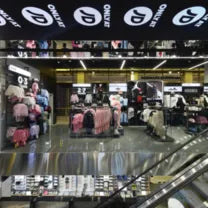
Amazon Prime Day 2025: A Mixed Bag of Sales Performance and Consumer Sentiment
Table of Contents
- Key Highlights:
- Introduction
- The Sales Decline: Understanding the Numbers
- Amazon's Response: Optimism Amid Challenges
- The Role of Mobile Shopping
- Economic Impacts: Broader Implications for Retail
- The Future of Prime Day: Lessons Learned
- FAQ
Key Highlights:
- Amazon's sales on the first day of Prime Day 2025 dropped 41% compared to the first day of the two-day event in 2024.
- Shoppers are reportedly putting items in their carts but delaying purchases, anticipating better deals.
- Despite the slow start, Amazon remains optimistic about the event's overall performance, citing increased engagement and more substantial discounts.
Introduction
Amazon Prime Day, a major retail event that attracts millions of shoppers each year, has once again captured headlines with its intriguing dynamics in 2025. This year, the event was extended to four days, offering consumers more opportunities to snag deals. However, the initial sales figures paint a complex picture, revealing a notable 41% decline in sales on the first day compared to last year’s event. As consumer behavior shifts, marked by hesitation to complete purchases, the question arises: What does this mean for Amazon and the broader retail landscape?
The Sales Decline: Understanding the Numbers
The first day of Amazon Prime Day 2025 saw a significant drop in sales, a statistic reported by Momentum Commerce. The company’s CEO, John Shea, attributed this decline primarily to a change in consumer behavior. Shoppers have become more strategic and selective, often placing items in their shopping carts but refraining from completing purchases. This cautious approach suggests that many consumers are waiting for potentially better deals, a departure from last year’s more impulsive buying behavior.
Consumer Behavior Trends
The shift in consumer behavior is not merely a reflection of this single event. It signals a larger trend toward a more calculated shopping style. As economic uncertainty looms, many consumers are approaching purchases with increased caution, leading to a more deliberate shopping experience. The impulse to buy quickly during flash sales appears to be waning, as consumers weigh their options more carefully.
Historical Context: Comparing Past Events
To further understand the significance of this sales drop, it's essential to analyze how Prime Day has evolved over the years. Last year’s shorter two-day event generated a sense of urgency among shoppers, leading many to act quickly to avoid missing out on discounts. This year, however, the longer duration may have inadvertently contributed to consumer hesitance, as shoppers feel they have more time to consider their purchases.
Amazon's Response: Optimism Amid Challenges
Despite the initial downturn, Amazon remains optimistic about the overall performance of this year’s Prime Day. Jamil Ghani, Vice President of Amazon Prime, expressed satisfaction with shopper engagement and noted that it was still early in the event. Amazon's decision to extend the duration of Prime Day was based on consumer feedback, indicating a desire for more time to explore deals.
Discounts and Offers: A Strategy to Engage Shoppers
In a bid to attract consumers, Amazon has rolled out more significant discounts this year, with numerous deals featuring savings of 50% or more compared to last year's event. This aggressive pricing strategy aims to entice hesitant shoppers and encourage them to complete transactions. Amazon’s focus on providing a broader range of deals showcases its commitment to capturing consumer interest, even amid a challenging retail environment.
The Role of Mobile Shopping
Mobile shopping has played a crucial role in the evolution of Prime Day, with recent data from Adobe indicating that over 50% of sales were made via mobile devices. This shift reflects changing consumer preferences, as more shoppers opt for the convenience of purchasing on-the-go. The growth of mobile commerce highlights the necessity for retailers to optimize their platforms for mobile users, ensuring a seamless shopping experience.
Buy Now, Pay Later Trends
Another notable trend this year is the increase in "buy now, pay later" (BNPL) orders, which rose by 13.6% year over year. This payment option is becoming increasingly popular among consumers looking to manage their finances more effectively. The rise of BNPL indicates a shift in how consumers are approaching larger purchases, opting for payment flexibility as they navigate economic uncertainties.
Economic Impacts: Broader Implications for Retail
The trends observed during Prime Day are not isolated incidents but rather indicative of broader economic factors influencing consumer behavior. With global tariffs and ongoing concerns about inflation, many retailers are left wondering how these elements will affect consumer spending. The juxtaposition of Amazon's Prime Day with Walmart's revitalized Walmart+ Week further emphasizes the competitive landscape and the testing of consumer confidence.
Retailers on Edge: Adapting to Consumer Sentiment
As retailers observe the mixed results from the initial days of Prime Day, they are left to ponder the implications for their own sales strategies. The current economic climate demands that businesses remain agile and responsive to consumer sentiment. Retailers must adapt their approaches, potentially shifting focus from aggressive sales tactics to fostering consumer trust and loyalty.
The Future of Prime Day: Lessons Learned
As Prime Day continues, the lessons learned from this year’s performance will undoubtedly shape future strategies for Amazon and other retailers. The decline in initial sales raises questions about the effectiveness of extended sales events in stimulating consumer spending. While Amazon has historically enjoyed success during Prime Day, adapting to evolving consumer behaviors will be crucial for maintaining relevance and profitability.
Building Consumer Trust
To regain momentum, Amazon and its competitors must focus on building trust with consumers. This can be achieved through transparent pricing, reliable product quality, and consistent engagement. Retailers that prioritize long-term relationships with shoppers may find greater success than those who rely solely on short-term sales tactics.
FAQ
What caused the drop in sales during Amazon Prime Day 2025? The 41% drop in sales was attributed to changes in consumer behavior, with shoppers hesitant to complete purchases due to expectations of better deals.
How does this year’s Prime Day compare to previous years? This year’s event was extended to four days, whereas previous years typically featured shorter events, which encouraged quicker purchasing decisions among consumers.
What strategies is Amazon employing to boost sales? Amazon has introduced more significant discounts and focused on enhancing shopper engagement to encourage purchases during this year's Prime Day.
How has mobile shopping impacted Amazon's sales? Mobile shopping accounted for over 50% of sales, highlighting the shift in consumer preferences towards purchasing on mobile devices for convenience.
What are the broader economic implications of this year’s Prime Day performance? The mixed results during Prime Day reflect broader economic uncertainties, influencing consumer spending habits and prompting retailers to adapt their strategies accordingly.
Power your ecommerce with our weekly insights and updates!
Bleibe auf dem Laufenden über das, was in der Handelswelt passiert
E-Mail-Adresse
Für Sie ausgewählt

10 July 2025 / Blog
JD Sports Expands Footprint with New Megastores and Surging Product Searches
Mehr erfahren10 July 2025 / Blog
Amazon Australia Unveils Record-Breaking Prime Day: A Week of Unmatched Deals
Mehr erfahren
10 July 2025 / Blog


